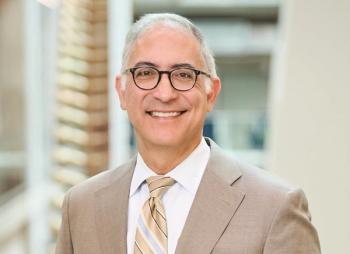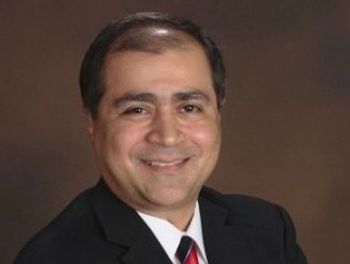
Dr. Trini Mathew Says Public Health Creates "Building Blocks" of Healthcare
An infectious disease expert discusses public health during a pandemic. Dr. Trini Mathew is chair of the Public Policy and Government Affairs Committee for the Society for Healthcare Epidemiology of America (SHEA).
Trini Mathew, M.D., M.P.H., is an infectious disease physician trained in healthcare epidemiology. She transitioned to become an independent consultant in infectious disease infection prevention. She serves as chair of the Public Policy and Government Affairs Committee for the Society for Healthcare Epidemiology of America (SHEA).
Chief Healthcare Executive™ had an opportunity to speak with Mathew about public health surveillance, shortcomings, and the cost effectiveness of public health.
Editor’s note: This interview has been lightly edited for style and clarity.
Chief Healthcare Executive™: Why are investments in public health so important for the rest of the health system to deliver good care?
Mathew: This is important because what we have learned over the decades of public health measures that have been in place in the U.S. is that public health makes up the building blocks for our healthcare system. In other words, what we have learned is that the frontline workers, through departments of public health, are really leading the way to make sure the rest of us in the community — and then by extension into acute care settings — are also staying safe. So, if we don't have very robust and strong public health programs in place, we may run into issues as we identified with the pandemic that started off in early 2020.
We have learned a lot from the control of tuberculosis here in the U.S., for example. Programs were built so that we had public health nurses going out into communities helping with contact tracing, helping patients and people take their medications, and that really helped with identification and early treatment and control for tuberculosis. So, if you look back in the U.S. history with the rates of TB, it's just been declining since the initial spike we had in 1990s. And that's great because we have had some amount of infrastructure in place. However, that infrastructure really has been brought down or decreased because of the lack of funding in the public health sector. And that's of concern to us because if we don't have community healthcare workers, if we don't have the nurses in these departments of health, if you don't have physicians, if you don't have epidemiologists, we run the risk of outbreaks happening. Unfortunately, we saw that also with the measles outbreak that we even had here in Southeast Michigan. The number of resources required in the public health is much more in outbreak settings compared to when we are keeping everything in a state at a safe level.
However, that is the paradox when we are successful — we decrease the funding. And that inadvertently leads to worse outcomes. And that's the paradox, we have to acknowledge. And we have to think outside the box now and think about always having a baseline and certain level of funding that shouldn’t be maintained at a steady level, but should be increased incrementally, as science is advancing.
For example, what we are learning as much after the fact with regard to whole genome sequencing, is that very few labs were up and running with the whole genome sequencing, having that platform available. And we were not checking on all the variants, we were not doing whole genome sequencing on all samples. Even now in the U.S. there are a very limited numbers of samples that are being sequenced for COVID-19. So, we don't even know what we don't know because all the samples are not being put through whole genome sequencing. Labs needed to be really having an opportunity to get those funds and scale it up. That's where I can really say that we can learn from the lessons from the past that we did well. However, we've had also missed opportunities, and therefore going forward, we really need to strengthen our public health infrastructure.
CHE: Can you discuss how public health surveillance has been short-changed over the years, and how that manifests itself in a pandemic?
Mathew: With public health infrastructure, what is really crucial is to pick up the signals of what's happening in a community. And if you don't have the resources, such as people, but also technology, and especially informatics, we miss out on identifying those signals early on, before it becomes an outbreak. It’s more than an outbreak — becoming a cluster and subsequently an epidemic, and then worse scenario is a pandemic, right? So, we need to strengthen this with people, that is the human resources; we need to make sure the frontline staff are well trained. And not just one-time training—we must have ongoing training to keep up with the science, with the advancement in medicine and have an opportunity to learn. If we invest in them, then of course, we have an opportunity to strengthen our public health infrastructure. Similarly, if we invest in technology, especially now as technology really has advanced a lot, including things such as artificial intelligence so that we understand we can put it through a data system, we are able to then utilize that to identify signals and then expand on those signals, and then build and strengthen our public health infrastructure.
It's very different from the 1950s. We now have many more tools available in the armamentarium for fighting an infection or preventing an outbreak of an infection, and that is, of course, leveraging technology. And having that technology requires a lot of funding.
When I was looking at immunization registries from a few years back, I found certain states did not have adult lifespan immunization registries. And it took a lot of funds for them to be able to scale up their childhood registries to also then include adult immunizations. So, in fact, lack of immunization registries can have a detrimental impact, and can lead to potential outbreaks of vaccine preventable illnesses. So that's where I was alluding to you about technology, and leveraging technology or systems, apart from just having the human resources.
CHE: At the beginning of the COVID-19 pandemic, there were reports of shortages of PPE and test supplies. Can you explain the connection between surveillance and the supply chain?
Mathew: Yes, thank you for bringing that up. Very early on when we started realizing that this was going to be a pandemic and not just an epidemic, many of us were sounding the alarm that we need to make sure we have a full supply of PPE to last this out for not just a week or two weeks, but much longer. So, when we start having surveillance, or we're picking up the signals, and we understand the science of transmission of a certain pathogen, we can extrapolate what it entails and how many people may be impacted in the community then, of course, in healthcare settings. We picked up the signal, but we did not translate it into preparedness, then that impacted us not having enough supplies of PPE.
But we should also consider the fact of where this whole pandemic may have originated, right? It originated in a country, and it spread across the globe. That could also have potentially impacted the production of supplies. And that's true even with a natural disaster. If you have factories in places where they're manufacturing PPE, but they're hit by natural disasters, then we have to be ready to pivot and be ready to scale up productions in other places where they can change. And we did that later on in the U.S. But it took us a while to supply ventilators, to supply PPE. We were not ready for that and it impacted us.
So that's the thing — if you have a robust pandemic preparedness, or an emergency preparedness group of people who are working on it and who are ready to switch and start making supplies because one part of the world is impacted, or they had natural disasters, and therefore their supply would be impacted — if you're ready for that, we would be much better prepared for facing any kind of pandemic in the future or any natural disaster. I think we can take all the examples from prior natural disasters where countries were impacted where they were the ones producing and mass scale certain products and, in the U.S., we felt that downstream consequence effects of the lack of those supplies. So again, a surveillance not just in the U.S., but globally, partnering with scientists globally would help us to take better care of our citizens in the U.S.
CHE: Can you discuss the relative cost effectiveness of public health spending compared with what is spent on healthcare when public health is underfunded?
Mathew: That's a good point how public health is underfunded. If it is underfunded, then that leads to, unfortunately, magnification of the cost when we are in a “Whack-a-mole” paradigm of fixing problems because that's when we will be putting more time and effort into building up when we are facing the enemy — the pathogen. If we had a public health infrastructure in place, that people were available and information technology was available and systems were in place, then we would be able to scale up things at a faster pace and not be at the mercy of people who may be causing us to pay out more with supplies that are inadequate. Or, for example, what we have faced counterfeit supplies, right, that then impacts and is at the loss of human lives.
I don't have the exact numbers, but again, what I'm sure people might be looking at for the past that year is that we have been — health systems I know have been putting in more into the funding that's cost them more than if they had built it up and had a system in place. When you are having to pay up four or five times the cost of a surgical mask, it clearly adds up and that's where it adds up for society as a whole and unfortunately, it also adds up to federal funding and the cost to the federal government.
CHE: Is there anything else that you would like to add about this topic?
Mathew: Thank you for allowing us to speak on this issue. What we at SHEA have been saying is that we need to build up multiple areas, not just the human resources, lab capacity, you mentioned, and you asked me about testing to make sure we have testing kits available. But it starts off with building materials for the swab to the reagents, for example, to have that to be an opportunity for mass production. So again, if we have a way or memorandum of agreement and understanding with companies who would be able to switch when we need this certain number of supplies, that will help us. Planning is really key and having a playbook or a toolkit for us available at a hospital level and at a public health department level and also at a large-scale level at a state and federal government level, it would help. I think lessons learned from this past year are that we could definitely scale up our public health infrastructure, but also for hospitals — small hospitals, large hospitals, and nursing homes — they need to be given the tools through state departments of public health or to the federal CDC but all these levels, we need to scale up with funding and resources so that we are better prepared, and we don't have unfortunately, this magnitude of human loss. The lives lost is unfortunately going to impact all of us, both at a personal level at a societal level but if you look at the economics, we've lost so many lives due to this pandemic.







































